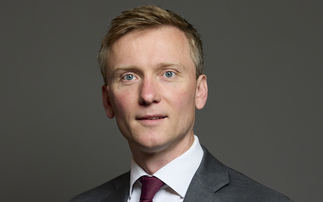Key points
At a glance
- Fed is first central bank to begin unwinding post-crisis QE programme
- Markets expect steady unwinding but any deviation could have huge impact on fixed income
- Difficult to pinpoint areas of weakness in financial system, and predict investors’ behaviour
The US central bank has become the first to begin reversing quantitative easing, with more to follow. Stephanie Baxter looks at what to expect from this historic shift.
Almost a decade after embarking on a stimulus programme that has more than quadrupled its balance sheet to $4.5trn (£3.4trn), the Federal Reserve (Fed) Open Market Committee announced on 20 September it would begin the process of unwinding this month.
In what has been dubbed a historical moment, the central bank is the first to take the plunge in a signal of its confidence in the recovery, with others set to also rein in their quantitative easing (QE) programmes.
It spells a huge change in central banks' monetary policy, after their actions following the 2008 crisis bloated their balance sheets to record highs and reduced bond yields to all-time lows.
The European Central Bank is expected to taper its monthly €60bn (£53.1bn) asset purchase programme next year. Meanwhile, the Bank of England governor has hinted UK rates could rise in the "relatively near term" with markets expecting a rise as early as November, despite slowed economic growth.
The big questions for investors are how long will it take the Fed and then other central banks to unwind their balance sheets, will there be a smooth reversal, and how would a rapid unwinding impact markets?
Steady reversal?
Kames Capital co-head of fixed income Adrian Hull says no one in the market thinks the Fed will go from $4.5trn to zero in short order as any deviation from a steady unwind could have a major impact on fixed income markets. Instead, the market is expecting the Fed's balance sheet to go from $4.5trn to $2.5trn in a period of time that does not shock the market. A disruption to ‘orderly' would likely cause meaningful market volatility and impact on valuations.
"There's been a very softly, softly, gentle approach," he says. "The Fed has communicated and carefully engineered its three previous rate rises, and it's taken a long time to do that. The Fed has raised rates when the markets have let it raise rates, and when the market has been in more abject pricing it hasn't raised rates.
"Fed reducing its balance sheet is a totemic moment rather than historical moment, and it's the start of a trend that will cover over many years and arguably decades. If you take that view, this will have a gentle impact.
"In 20 years' time, we'll say this was the start of the unwinding of QE. I suspect in terms of headline numbers in the next few years we'll see a plateauing of total assets on central bank balance sheets, not a pyramid structure. Over the next five to 10 years those numbers won't materially increase, but won't materially decrease."
However, in the UK, Hull does not expect the BoE to look to unwind its balance sheet anytime soon, because it is "difficult to see recent slowed growth materially changing over the next six months".
The effects of QE have been low interest rates and investors buying low-risk assets such as government bonds. Although one might logically expect yields to rise when the Fed reduces its balance sheet - which would be good news for defined benefit schemes with large deficits - it is not that straightforward as other technical factors will be at play.
As Hull says: "You'd think reducing half the Fed's balance sheet would push yields higher. But QE was done in conjunction with other tools such as interest rate policy. Going back a couple of years, the working assumption was rates would go to a normal rate, and [increase as growth improves].
"The reality is the growth in the markets has been more sluggish, and rates haven't normalised at the headline numbers people anticipated. Unwinding the balance sheet in tandem with an interest rate rising policy means rates are likely to go up less dramatically than would otherwise be the case if your sole aim for reversing the easing policy was to go raise rates. So there will be a dampening effect on rate rises."
But it is very difficult to forecast the market ramifications with any precision, as there are no historical precedents for unwinding QE in this way.
Difficult to predict
M&G Investments senior credit portfolio officer Richard Ryan cautions against trying to make clear predictions and acting on them prematurely.
"A lot of people will have a very clear, distinct view on what the impact of the paring back of QE will be and where it will be felt, but we simply don't know where the ripple will be hit. There are lots of very plausible scenarios you could come up with that would lead to a much less orderly market reaction than I suspect the market and central banks are currently thinking about."
He adds the idea we can pinpoint the areas of weakness in the financial system is somehow misplaced, and that it is hard to predict investors' behaviour.
"QE has changed investor behaviour - those normally in investment-grade might have strayed into high yield, and those in high yield may have strayed into equity-like investments. Traditionally developed market equity investors may have become emerging market investors."
As we move back into a more normal environment, some of those behaviours may revert to type.
In the absence of certainty about the future, investors could look at market valuations today and ask if there is sufficient compensation for risk built in.
If things turn out not to be quite as simple as people hope, is there enough cushion in the valuations to absorb that? M&G Investments thinks the answer is probably no, says Ryan.
"The credit markets are historically getting back to pretty tight levels, and certainly in investment-grade across both sterling and euros, the credit markets are weaker than previously. From a rating perspective, they're weaker in the composition of markets and more heavily weighted to lower-rated credits than have been historically. Relatively tight spreads and weaker markets in aggregate is the wrong combination."
"Could this translate into an EM crisis, or higher consumer and mortgage defaults? All those knock-ons might have effect where we're least expecting," he adds.
Implications for schemes
Schemes should have a plan in place so they can react if the market behaves in a certain way, such as where valuations fall, and there is a sell-off.
Pension schemes as providers of long-term capital are well-placed to do that because they can afford to weather the short-term volatility. If there is a market collapse or significant shift in rates, schemes can come in at that point and get involved.
BlackRock director for client solutions Vivek Paul says schemes' strategic asset allocation should be based on a more medium-term outlook.
"They want to think more about what might the world look in five years' time compared to today and make decisions based upon that. The world at that point will see QE having much less impact than today on financial markets, and is partly the reason why we foresee yields then being higher than today and higher than the markets are currently pricing across all developed markets, which would have implications for interest rate and inflation hedging, and also for asset allocation."
As the reversal of QE will play out over many years, and its impact is very difficult to predict, schemes should prepare now so they are ready to react as and when they need to.








